How Sonic Frontiers’ Open Zone And Cyber Space Evolve The Franchise

Sonic Frontiers’ concept would be a good elevator pitch. It might include the phrase “open-world”. However, while the game features many tenants of the open-world genre, Sonic Team is adamant about calling Frontiers an “open-zone” game instead. While on the surface that sounds like little more than a marketing ploy, after chatting with the developers, it makes more sense as you dig deeper into its meaning.
Coming off 2017’s Sonic Forces, a game that didn’t fare well with critics or fans, the development team wanted to shake things up. Forces received criticism for its generic 3D level design, unfulfilling story, short length, and poor 2D gameplay compared to the then-newly released Sonic Mania. According to Sonic Frontiers director Morio Kishimoto (who also directed Forces), the team carried a lot of lessons from Sonic Forces and other previous 3D Sonic games into Frontiers.
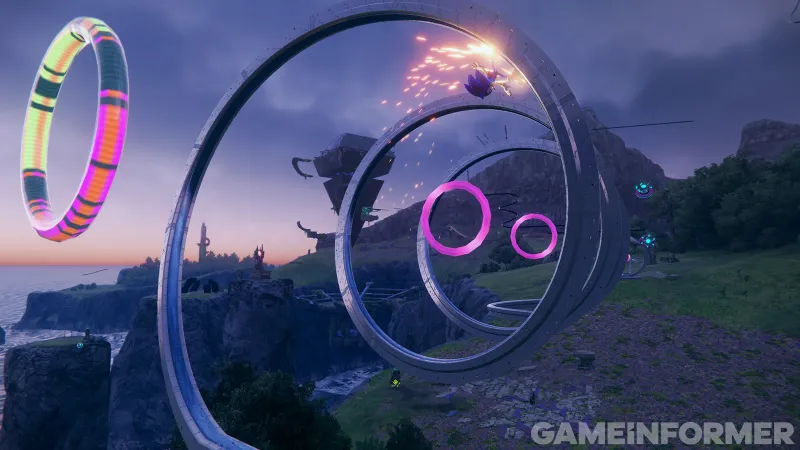
“I’ve been on the Sonic Team for 19 years now, and I do want to say that we have constantly learned from our successes and failures, not just the previously released Sonic Forces but on every Sonic title we have ever worked on,” he says. With 32 years’ experience in Sonic development, I put all of my learnings into practice when developing this game. […] Selectively only speaking about the learnings from Sonic Forces, I believe we learned that the method of designing stages with specific game mechanics (which all started with Sonic Unleashed) where we have shorter stages, pull back on Sonic’s speed a bit, and implement new actions for Sonic in the title is no longer going to satisfy the expectations of either our Sonic fans or those who like stage-clear action games.”
This lesson led to one of the solutions: create large, open spaces where players can spend endless hours exploring, finding clues, defeating bosses and gathering items. This approach not only changes the pace of the classic Sonic the Hedgehog game, but also extends the gameplay time, which Takashi Iizuka, Sonic Team’s creative officer, complained about when Forces came out. Iizuka is convinced that Sonic Frontiers has been the longest Sonic mainline title to date. Iizuka states that when we are working on a game concept, we look at the reactions to previous games as well as user feedback. There are many lessons to be learned, however, one would be the playthrough times. The playthrough time for previous games was quite short, however the open area and other factors have made this game significantly more enjoyable.
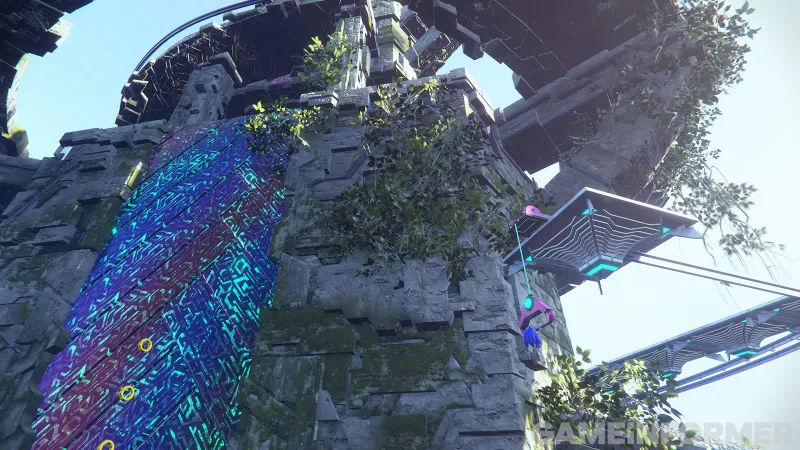
One of the primary challenges when starting development on the open-zone concept was making sure it felt true to the Sonic franchise. Iizuka said that when I take on new challenges for 3D Sonic games, I try to go back and revisit Sonic’s roots. Classic Sonic allowed you to enjoy fast-paced experiences and exploration of routes just by moving to your right. Sonic Adventure’s evolutionary leap to 3D was built on this starting point. Open-zone was also revisited and an evolutionary leap was made from that point to develop a playstyle that fits Sonic.
Kishimoto is able to trace Sonic Frontiers’ open zone format back to Super Mario Bros. 3. The hub world connects multiple linear-style stages and allows you clear them. Kishimoto enjoyed the growth of the game world map mechanics since its 1988 debut on Famicom. Sonic Frontiers was inspired by the original playable map concept used in Sonic Adventure. The new Sonic Frontiers game allows players to not only discover a large hub with various environmental puzzles and challenges but also offers a variety of challenges which go beyond those found in the original Adventure games.
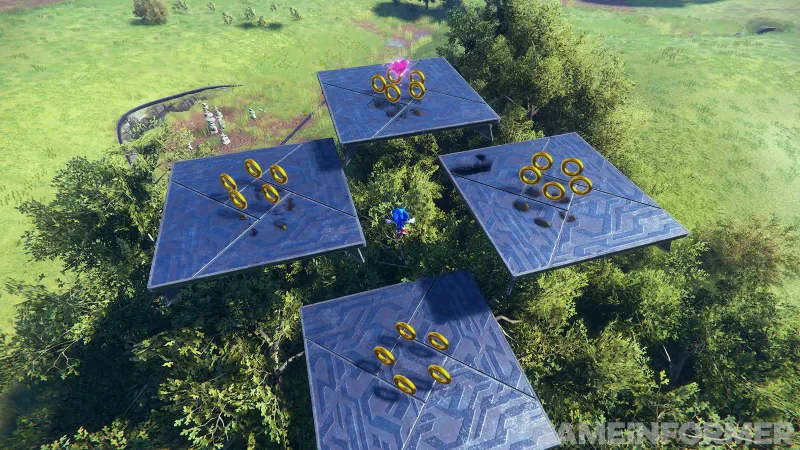
The open-zone format allows the developers – and by extension, the players – to take advantage of the two most important elements of Sonic games, at least according to Iizuka. It’s about running at high speed and making discoveries. Iizuka states that 2D Sonic had players heading to the left and 3D Sonic was players moving deeper into screen. “In open-zone mode, the options are endless and players can decide which direction they wish to take.”
Iizuka said that the greatest challenge was to break out of old gameplay patterns and make the world fun to travel at high speed. “We’ve been building high-speed action on a path for more than 20 years, so it wasn’t easy to get rid of it,” Iizuka says. “For example, it’s like taking F1 racing and getting rid of the course to drive on a wide, flat plain. That wouldn’t be any fun, would it? “In the initial stages of the project, the idea of creating an island area where the game could be played was constantly being explored in order to find the best open space.
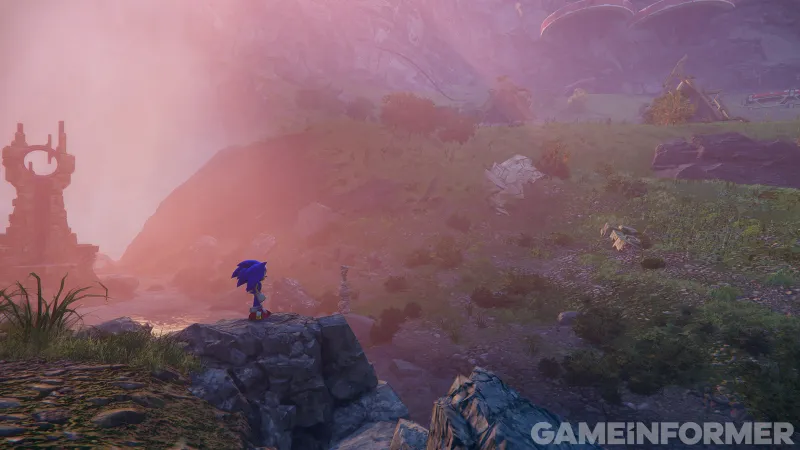
In my past conversations with Iizuka https://www.gameinformer.com/2022/07/11/how-sonic-frontiers-open-zone-and-cyber-space-evolve-the-franchise, he lamented how the team would work hard to design environments in the linear Sonic stages, only to have players run through them in a couple of minutes or less – an unavoidable side effect of having a game based on speed. This became a sticking point in the early 2000s, as design became more intensive in the transition from 2D to 3D; sprite work giving way to fully realized polygonal design added a lot of time to the stage creation process, with players running through the environments just as quickly in many cases. During my hands-on time with Frontiers, the open-zone format seems to be a remedy for that previous problem, as one enormous environment plays host to dozens of destinations and objectives and hundreds of collectibles.
My foray into Sonic Frontiers’ open-zone concept was on Kronos Island, one of the Starfall Islands. Iizuka assured me that even though this is where you start your adventure, we’ll be visiting all Starfall Islands before our Sonic Frontiers tale ends. Throughout the adventure, players experience various biomes and environments – which isn’t uncommon in a Sonic game. Frontiers’ open-zone approach means that these zones contain a lot more content.
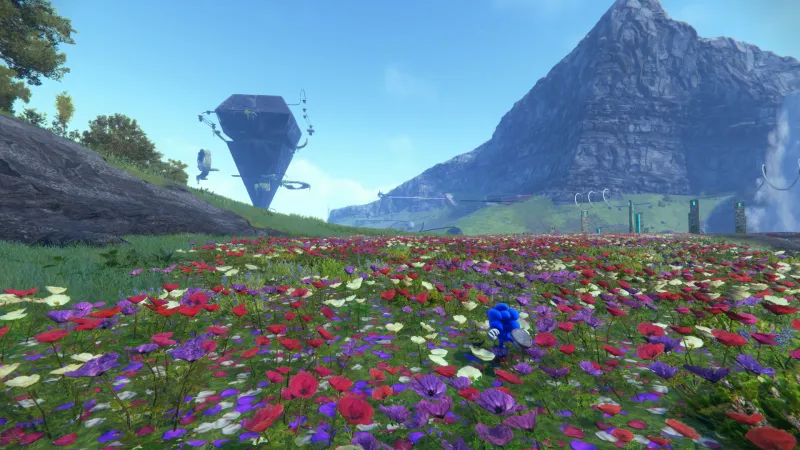
Transitioning to this gameplay style is a massive undertaking but ensuring Sonic controls well in an open area is another thing entirely. Sonic the Hedgehog (2006) is a game that we’ve witnessed him struggle to control. However, Sonic Frontiers’s focus on the hub world increases the chance of this happening. I had a great time speeding through Kronos Island’s open area. Sonic’s weight is right for exploration and speed, so he won’t slip around as in other games. The more complex platforming sequences are vastly better than previous titles.
Many were critical of the apparent emptyness of the open area during the first gameplay reveal for Sonic Frontiers. It makes sense in the vacuum of those clips, but when you’re running with the speed of Sonic, the spacing of enemies and obstacles makes sense. Games like The Legend of Zelda: Breath of the Wild and Elden Ring masterfully space out their encounters but feature a much denser world than Sonic Frontiers’ early public footage. But, considering Sonic’s speed through the environment, it makes sense. In my short time with an early build, I found that the timing of encounters or discovery was well-paced.
Cyber Space will be the main destination. These linear action stages, which you access through marked portals in the open zone, offer experiences that veer much closer to the traditional 3D action stages of past Sonic titles. The Cyber Space stages have been themed after previous Sonic titles, such as Sonic 1 and Sonic 2. Fans have seen them in many recent games including Generations and Mania. While games like Generations and Mania served as celebrations of Sonic’s past, Iizuka’s justification for having these zones and others from the past appears in Frontiers is that the Cyber Space levels pull from Sonic’s memories.

While the open zone areas are perhaps the biggest selling point of Frontiers, Sonic Team wanted to focus on the quality of these Cyber Space stages over the course of development. “When we started the project, as we were developing the title and even now as we are looking to release this title out to the world there was one reason we were doing it – to once again have Sonic stand amongst the other ‘stage-clear’ action games,” Kishimoto says. “I am talking about games like the Super Mario, Donkey Kong, and Kirby franchises, that I personally loved – and Genesis-era Sonic the Hedgehog stood alongside those titles. Although this may seem like a difficult task and not something that can be done easily, it’s exactly what the Sonic Team has taken on with this project.
The traditional Cyber Space stages will be the main driving forces of the gameplay. Players can expect to have to exit the open-zone areas to enjoy these stages. Kishimoto suggests other routes to progress through the game, if the players prefer open-zone areas. He says, “The open-zone mechanic was a great way to improve the game’s ability to provide a variety of gameplay and stage-clear action.” “Including the traditional linear gameplay inside of the open-zone format is definitely a very important point, but it’s not the de facto playstyle. In order to progress through Sonic Frontiers you can choose to strategically play the traditional linear gameplay as one way of advancing, but it’s not absolutely necessary so depending on your play style the amount you want to engage in that gameplay is up to you.”
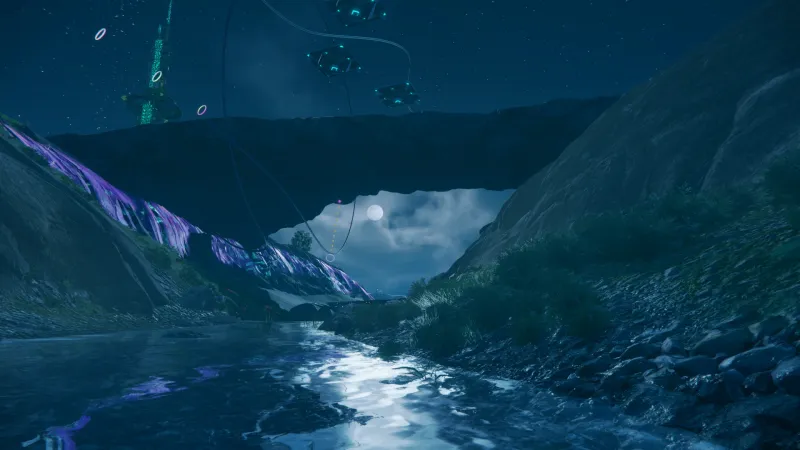
Despite the fact that the developers seem to be downplaying Kronos Island’s role as an interactive hub, I spent most of my time in Kronos Island, which was the open area. As I was exploring the open world, I solved many puzzles and completed numerous challenges. I also sped through several obstacle courses and collected various collectibles. Of course, much was in service of progressing the main storyline, which often asked me to return to the Cyber Space stages, but those levels are quick-hit and fast-paced, more focused on getting through it efficiently than thoroughly combing the area.
Cyber Space houses many other characters. For instance, I progressed through multiple missions in the open zone involving freeing Amy from Cyber Space. Meanwhile, another pocket of Cyber Space has everyone’s favorite cat, Big, hosting a fishing minigame letting you earn currency for his in-game shop. Cyber Space’s secrets became more complicated the longer that I played the game, but I felt they were all supportive of big open areas during the nearly three hours I spent playing it.
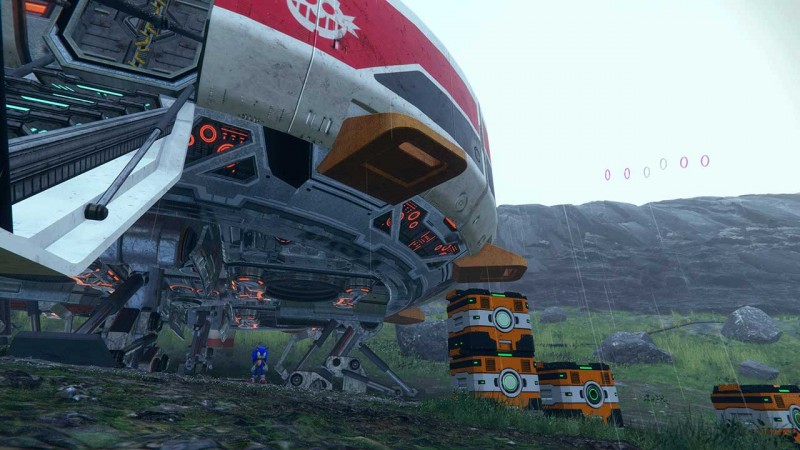
As I continued to play, I found myself enjoying the many gameplay options, including finding boss battles within the open zones, entering Cyber Space for action-packed stages and then returning to the open area to claim my Chaos Emerald. It’s possible that Sonic Frontiers will continue to be the main series’ format. “To evolve the linear, stage-clearing 3D action that began with Sonic Adventure in 1998 and create a game that would be the cornerstone of future Sonic games – that was the goal when we started [Sonic Frontiers],” Iizuka says.
Sonic Team is clearly looking to alter the course and formula of Sonic’s franchise by launching its latest title. I am excited to spend more time playing the game before launch. Sonic Frontiers will be available on PlayStation 5, Xbox Series X/S and PlayStation 4, Xbox One and Switch later in the year.
#Sonic #Frontiers #Open #Zone #Cyber #Space #Evolve #Franchise








